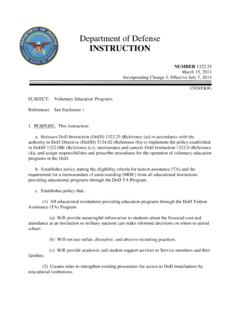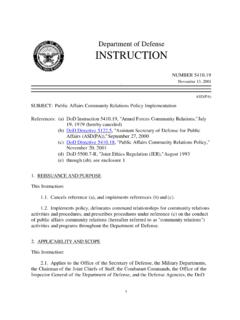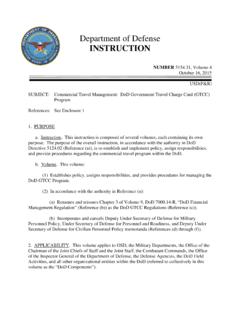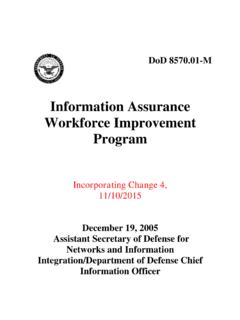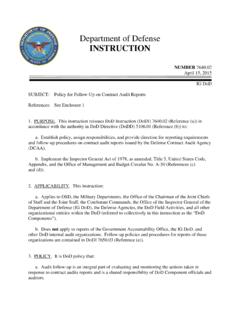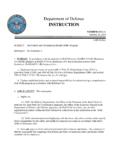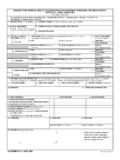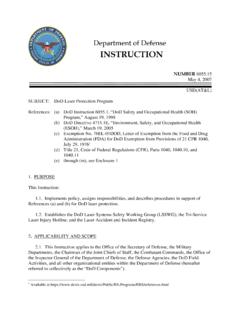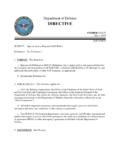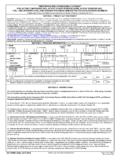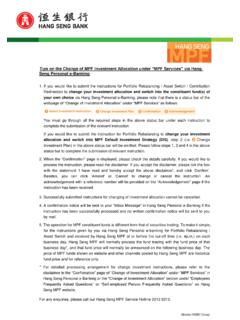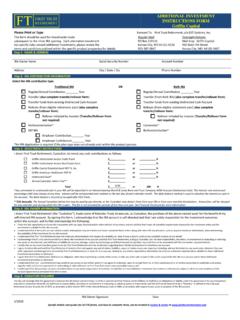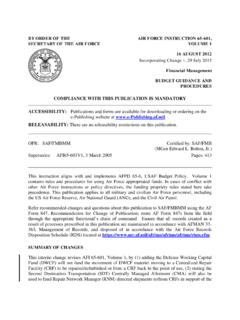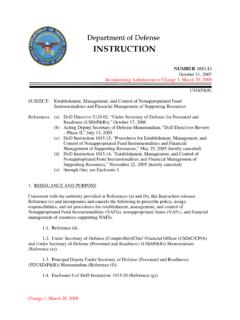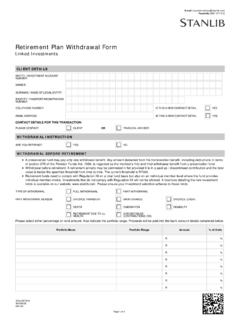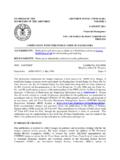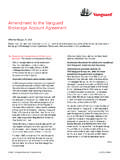Transcription of The linked image cannot be displayed. The file may …
1 The linked image cannot be displayed. The file may have been moved, renamed, or deleted. Verify that the link points to the correct file and of Defense INSTRUCTION NUMBER January 7, 2015 Incorporating Change 3, August 10, 2017 USD(AT&L) SUBJECT: Operation of the Defense Acquisition System References: See References 1. PURPOSE. This instruction: a. In accordance with the authority in DoD Directive (DoDD) (Reference (a)) and DoDD (Reference (cm)), reissues the interim DoD Instruction (Reference (b)) to update established policy for the management of all acquisition programs in accordance with Reference (a), the guidelines of Office of Management and Budget Circular A-11 (Reference (c)), and References (d) through (cw).
2 B. Authorizes Milestone Decision Authorities (MDAs) to tailor the regulatory requirements and acquisition procedures in this instruction to more efficiently achieve program objectives, consistent with statutory requirements and Reference (a). c. Assigns, reinforces, and prescribes procedures for acquisition responsibilities related to cybersecurity in the Defense Acquisition System. d. Incorporates and cancels Directive-type Memorandum 17-001 (Reference (cl)). 2. APPLICABILITY. This instruction applies to OSD, the Military Departments, the Office of the Chairman of the Joint Chiefs of Staff and the Joint Staff, the Combatant Commands, the Office of the Inspector General of the Department of Defense, the Defense Agencies, the DoD Field Activities, and all other organizational entities within the DoD (referred to collectively in this instruction as the DoD Components ).
3 3. POLICY. The overarching management principles and mandatory policies that govern the Defense Acquisition System are described in Reference (a). This instruction provides the detailed procedures that guide the operation of the system. DoDI , January 7, 2015 Change 3, 08/10/2017 2 4. RESPONSIBILITIES a. Defense Acquisition Executive (DAE). The DAE is the Under Secretary of Defense for Acquisition, Technology, and Logistics (USD(AT&L)). The DAE will act as the MDA for Major Defense Acquisition Programs (MDAPs) and Major Automated Information System (MAIS) programs. In accordance with Table 1 in Enclosure 1 of this instruction, the DAE may delegate authority to act as the MDA to the head of a DoD Component, who may further delegate the authority to the Component Acquisition Executive (CAE).
4 The DAE may also delegate MDA authority to another OSD official as the DAE considers appropriate. b. MDA. The MDA will establish procedures for assigned programs using this instruction as guidance. MDAs should limit mandatory procedures applicable to all assigned programs so as to not exceed the requirements for MDAPs or MAIS programs and other acquisition programs governed by this instruction or DoD Directive (Reference (a)). MDAs should tailor regulatory procedures in the document consistent with sound business practice and the risks associated with the product being acquired. c. Heads of the DoD Components.
5 The DoD Component Head will implement the procedures in this instruction and Reference (a). Component-required procedures will not exceed those specified in this instruction. When necessary, waivers or requests for exceptions to the provisions of this instruction will be submitted to the DAE, the DoD Chief Information Officer (DoD CIO), the Director, Operational Test and Evaluation (DOT&E), or the Director, Cost Assessment and Program Evaluation (DCAPE), via the CAE. Statutory requirements cannot be waived unless the statute permits. d. Secretaries of the Military Departments. In addition to the responsibilities described in paragraph , the Secretary of the Military Department acquiring an MDAP will represent the customer ( , the DoD Component(s) fielding the system).
6 The Secretary concerned, in coordination with the Chief of the Military Service fielding the system, will balance resources against priorities and ensure appropriate trade-offs are made among cost, schedule, technical feasibility, and performance throughout the life of the program. e. Chiefs of the Military Services. The Chiefs of the Military Services fielding MDAPs will represent the customer and, with the Secretary of the Military Department acquiring the MDAP, balance resources against priorities and ensure that appropriate trade-offs are made among cost, schedule, technical feasibility, and performance throughout the life of the program.
7 The Chief concerned will advise the MDA on trade-offs before Milestones A and B. As part of the MDA s Written Determination before Milestone A and Certification and Determination before Milestone B (these milestone information requirements are detailed in Table 2 in Enclosure 1), the MDA must determine that the Chief and the Secretary concur with the cost, schedule, technical feasibility, and performance trade-offs that have been made. DoDI , January 7, 2015 Change 3, 08/10/2017 3 5. PROCEDURES a. Overview (1) Program Categories. The statutes governing defense acquisition programs are complex, and the categories into which a program falls will impact acquisition procedures.
8 The designation of a program as an MDAP, a MAIS program, or a Major Weapons System; and the determination that the program is an Information System, a Defense Business System, or responds to an urgent need affect program procedures and policies. (2) Program Structure. The structure of a DoD acquisition program and the procedures used should be tailored as much as possible to the characteristics of the product being acquired, and to the totality of circumstances associated with the program including operational urgency and risk factors. (a) MDAs will tailor program strategies and oversight, including program information, acquisition phase content, the timing and scope of decision reviews and decision levels, based on the specifics of the product being acquired, including complexity, risk factors, and required timelines to satisfy validated capability requirements.
9 (b) When there is a strong threat-based or operationally driven need to field a capability solution in the shortest time, MDAs are authorized to implement streamlined procedures designed to accelerate acquisition system responsiveness. Statutory requirements will be complied with, unless waived in accordance with relevant provisions. (c) In accordance with Section 806 of Public Law 114-92 (Reference (d)), the Secretary of Defense may waive acquisition law or regulation to acquire a capability that would not otherwise be available to the DoD Components. This waiver authority may not be delegated.
10 Detailed provisions and requirements for this waiver are identified in Table 6 in Enclosure 1 of this instruction. (3) Program Acquisition Categories (ACATs) and Types. All defense acquisition programs are designated by an ACAT ( , ACAT I through III) and type ( , MDAP, MAIS, or Major System). MDAPs are either estimated to achieve the statutorily defined MDAP cost threshold, or are designated as an MDAP by the DAE. Similarly, MAIS programs are either estimated to achieve the statutorily defined MAIS program cost threshold, or are designated a MAIS program by the DAE. MAIS programs are software intensive and typically have a lower investment level than MDAPs.
